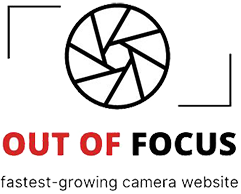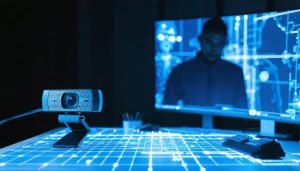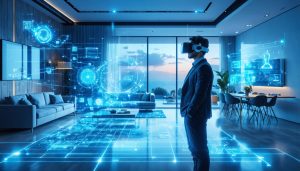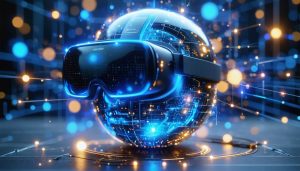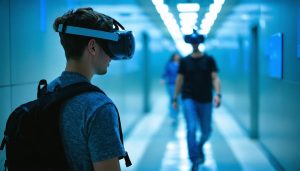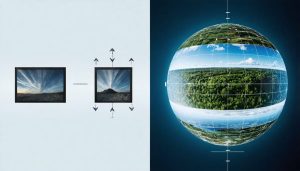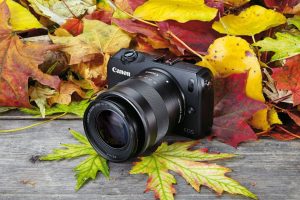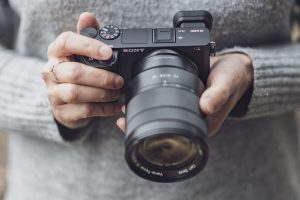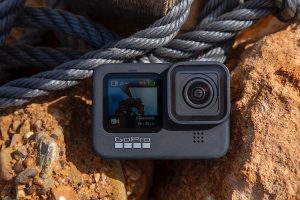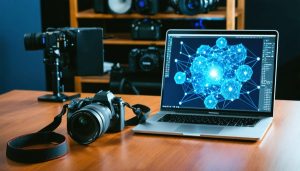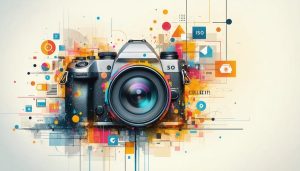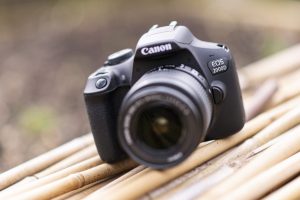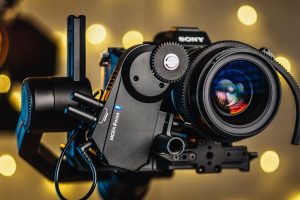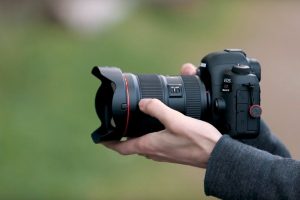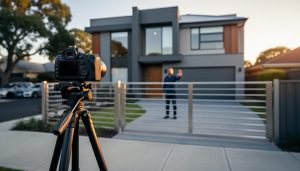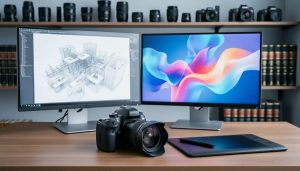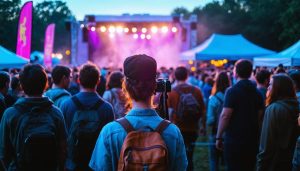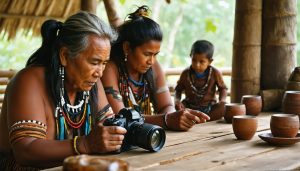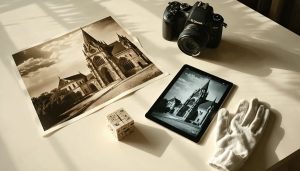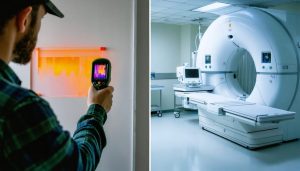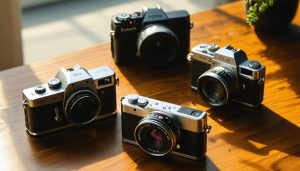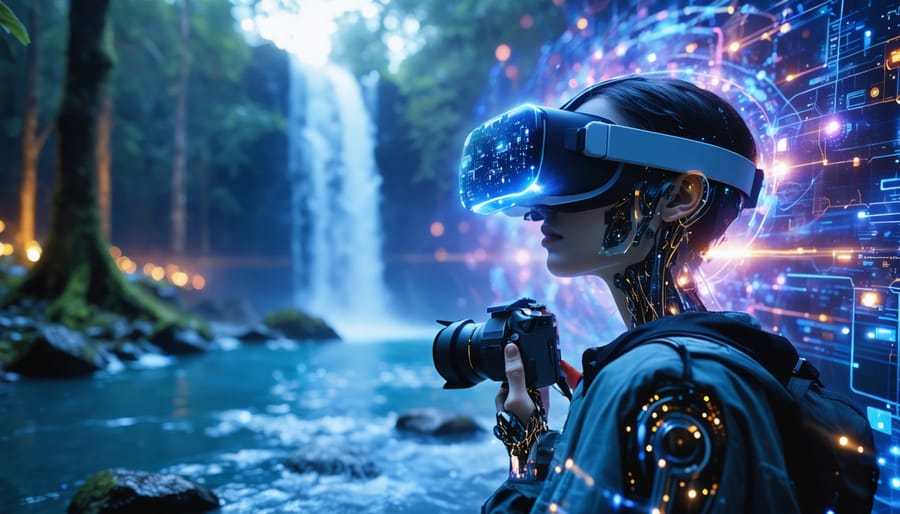
Virtual reality and artificial intelligence represent two distinct yet increasingly intertwined technologies that are revolutionizing how we experience digital worlds. While VR creates immersive environments that engage our senses, AI photography fundamentals and machine learning algorithms enhance these experiences through intelligent processing and adaptation. Unlike traditional computer programs, AI systems in VR can learn from user interactions, predict movements, and generate dynamic content in real-time, creating more responsive and personalized virtual experiences.
Consider how a modern VR headset tracks your movements and adjusts the virtual environment accordingly – while this may seem like AI at work, it’s actually a combination of sophisticated sensors and programming. True AI integration in VR goes beyond simple motion tracking, incorporating complex algorithms that can understand context, adapt environments, and create intelligent virtual agents that respond naturally to user behavior.
Understanding this distinction is crucial for photographers and creative professionals looking to harness both technologies effectively. As these technologies continue to converge, they’re opening new possibilities for immersive storytelling, interactive art installations, and next-generation visual experiences that blend the physical and digital worlds.
Understanding AI’s Role in VR Photography
Real-Time Scene Recognition and Enhancement
AI’s role in VR scene recognition operates like a sophisticated visual interpreter, processing and enhancing what you see in real-time. When you move through a virtual environment, AI algorithms continuously analyze the scene, identifying objects, textures, and spatial relationships to create a more authentic experience.
The system works by using deep learning models that have been trained on millions of images, enabling them to recognize and enhance various elements instantaneously. For example, when you’re exploring a virtual art gallery, AI can adjust lighting conditions, improve texture details, and even enhance the depth perception of artwork as you approach it.
These real-time improvements aren’t just cosmetic. AI algorithms can predict your movements and pre-load relevant visual data, reducing latency and motion sickness. They can also dynamically adjust the level of detail based on where you’re looking, optimizing performance while maintaining visual quality.
For photographers and artists working in VR, this means more realistic previews of their work, better color accuracy, and improved spatial awareness. The AI can even suggest composition adjustments or lighting modifications based on established photography principles, making it an invaluable tool for both learning and creation.
AI-Powered Depth Mapping
AI-powered depth mapping has revolutionized how we create immersive virtual reality experiences, particularly in 3D photography for VR. By analyzing multiple image layers and visual data points, AI algorithms can accurately determine the distance between objects in a scene and create detailed depth maps that bring VR environments to life.
Think of it as giving your VR system depth perception similar to human vision. When you look at a scene, your brain naturally processes depth cues to understand spatial relationships. AI performs this task by examining subtle variations in lighting, shadows, and perspective to generate precise depth information for each pixel in the image.
Modern AI systems can now process this information in real-time, enabling dynamic depth mapping that responds to user movement and perspective changes. This technology is particularly valuable for photographers creating virtual tours or immersive art installations, as it automatically generates realistic depth information without requiring complex manual measurements or specialized equipment.
The result is more natural-looking VR environments where objects appear properly positioned in three-dimensional space, creating a more convincing and comfortable viewing experience for users.
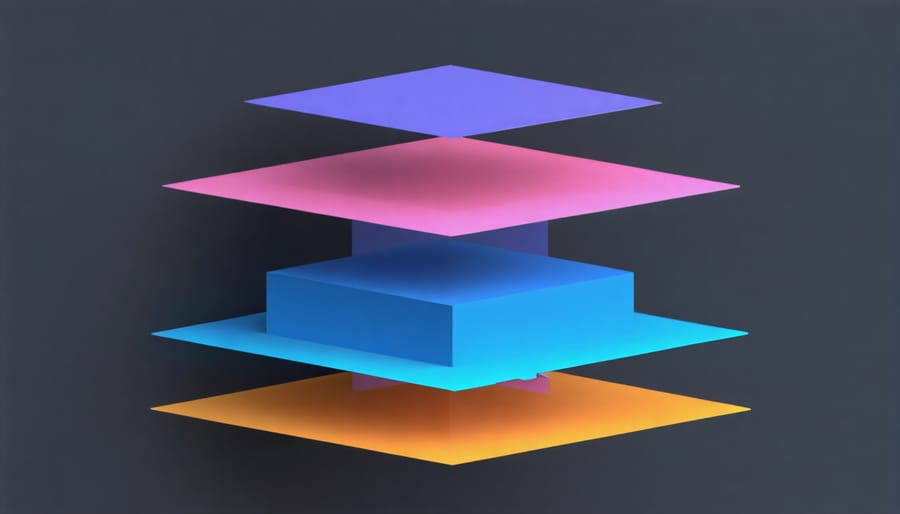
AI-Enhanced VR Photography Features
Automatic Scene Optimization
In virtual reality environments, artificial intelligence works tirelessly behind the scenes to deliver the most visually compelling experience possible. Through sophisticated algorithms, AI constantly analyzes and adjusts various elements of the scene in real-time, much like having a professional cinematographer directing every frame of your VR experience.
The system begins by evaluating the overall exposure levels, ensuring that both bright and dark areas are properly balanced. This becomes particularly crucial in VR environments with dynamic lighting conditions, such as moving from indoor to outdoor spaces. Through AI-powered lighting optimization, the system can instantly adjust brightness levels while maintaining natural-looking contrast and preventing loss of detail in shadows or highlights.
Color management is another area where AI shines in VR environments. The technology automatically adjusts color temperature and saturation to maintain consistency across different scenes while ensuring vibrant, true-to-life colors. This is especially important when transitioning between different virtual environments or when incorporating mixed reality elements.
Perhaps most impressively, AI handles scene composition by dynamically adjusting viewport perspectives and focal points based on user movement and interaction. This ensures that important visual elements remain properly framed and balanced, regardless of how the user navigates through the virtual space. The result is a more natural and immersive experience that reduces visual fatigue and enhances overall engagement.
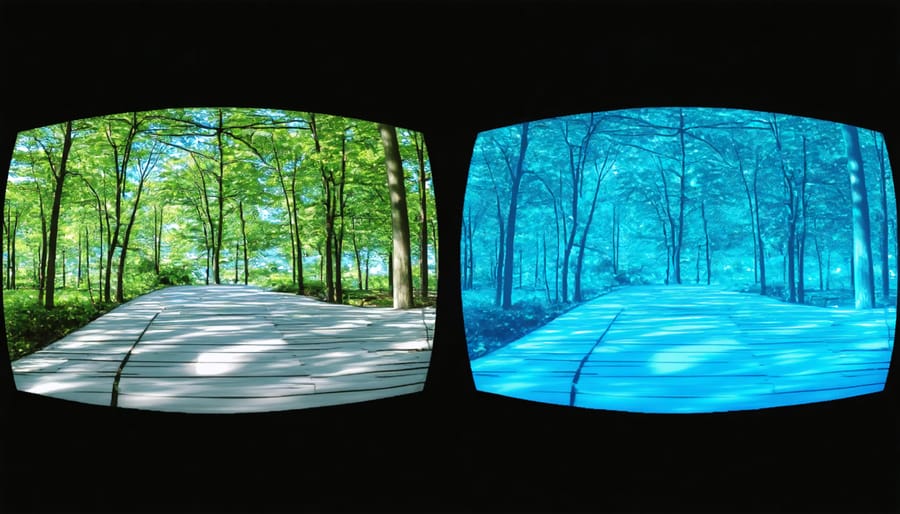
Smart Object Recognition and Tracking
One of the most impressive features of modern VR systems is their ability to recognize and track objects and subjects in real-time, thanks to sophisticated AI algorithms. This technology works through a combination of computer vision and machine learning, enabling VR systems to understand and interact with their environment in increasingly natural ways.
When you’re using a VR headset, the system constantly processes visual data through multiple cameras and sensors. AI algorithms analyze this data stream, identifying objects, people, and movements within the virtual space. This recognition isn’t limited to simple shapes – modern AI can distinguish between different types of objects, recognize facial expressions, and even interpret hand gestures with remarkable accuracy.
The tracking aspect is equally impressive. AI continuously monitors the position and movement of identified objects in three-dimensional space. This enables features like hand tracking for controller-free interactions, body tracking for more immersive experiences, and even eye tracking in advanced headsets. For photographers exploring VR photography, this means being able to position virtual cameras naturally, adjust lighting based on subject movement, and even track multiple subjects simultaneously.
What makes this technology particularly powerful is its ability to learn and adapt. The AI systems improve their recognition accuracy over time, becoming better at identifying objects and predicting movement patterns. This creates more responsive and intuitive VR experiences, especially in applications like virtual photo studios where precise tracking is essential.
Neural Rendering Techniques
Neural rendering represents a groundbreaking fusion of AI and VR technology, dramatically enhancing the visual quality and realism of virtual environments. By leveraging deep learning algorithms, these techniques can generate highly detailed textures, lighting effects, and real-time scene modifications that were previously impossible to achieve.
One of the most impressive applications is neural radiance fields (NeRF), which creates stunningly realistic 3D scenes from a series of 2D images. This technology analyzes multiple photographs of an object or environment and constructs a detailed volumetric representation, allowing users to explore virtual spaces with unprecedented photorealism.
AI-powered upscaling and anti-aliasing techniques work in real-time to enhance image quality, reducing the jarring pixelation and artifacts that can break immersion in VR experiences. These neural networks can also predict and generate missing visual information, filling in gaps and creating smoother transitions between frames.
Another fascinating development is neural style transfer in VR, which can instantly transform virtual environments by applying artistic styles while maintaining spatial coherence. This allows creators to experiment with different visual aesthetics without compromising the structural integrity of the virtual space.
These advances are particularly valuable for VR applications in architecture visualization, virtual photography, and immersive storytelling, where visual fidelity is crucial for user engagement and practical utility.
Practical Applications for Photographers
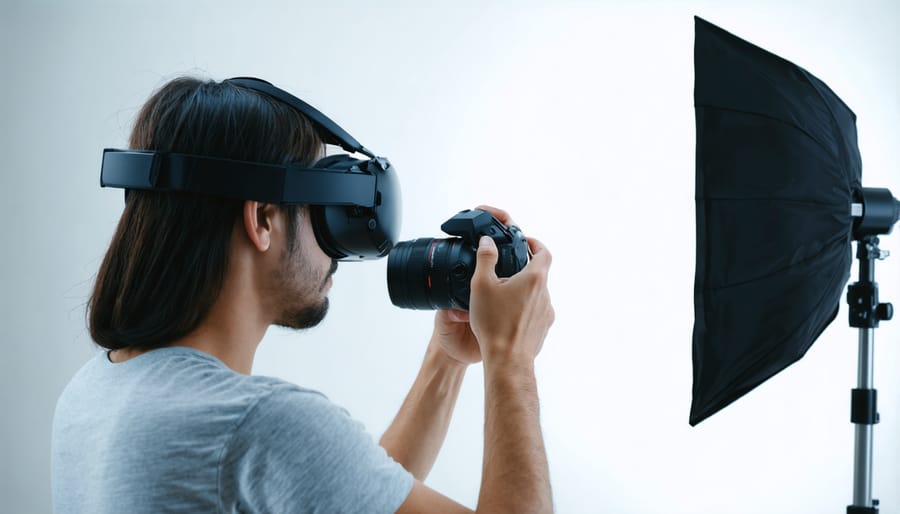
Virtual Photo Studios
Virtual photo studios powered by AI and VR technology are transforming the way photographers work, offering unprecedented creative control and efficiency. These innovative spaces combine the immersive qualities of virtual reality with AI’s ability to understand and manipulate visual elements in real-time.
Photographers can now create entire studio setups virtually, complete with adjustable lighting, backgrounds, and props – all without physical equipment. AI algorithms analyze scene composition and suggest optimal VR composition techniques, helping photographers achieve professional results more consistently.
The real magic happens in how AI interprets photographer movements and intentions within the virtual space. When you gesture to adjust virtual lighting, the system understands context and makes intelligent adjustments to maintain natural-looking shadows and highlights. This intuitive interaction feels remarkably similar to working in a physical studio, but with the added benefit of unlimited creative possibilities.
For product photographers, these virtual studios are particularly revolutionary. They can photograph items in perfectly controlled environments, with AI automatically generating multiple variations of lighting and composition. The technology even enables real-time collaboration, allowing clients to join virtual sessions and provide immediate feedback on shots.
This fusion of AI and VR in photography studios isn’t just about convenience – it’s about expanding creative possibilities while reducing equipment costs and setup time, making professional-quality studio photography more accessible than ever before.
360-Degree Photography Enhancement
AI technology has revolutionized 360-degree photography by introducing sophisticated algorithms that enhance image quality and streamline the creation process. These AI-powered systems can automatically stitch multiple photos together with remarkable precision, eliminating the common issues of misalignment and exposure differences that often plague panoramic shots.
One of the most impressive applications is AI’s ability to correct distortion and perspective issues in real-time. When capturing 360-degree content, the software analyzes spatial relationships and adjusts the imagery to appear more natural to the human eye. This is particularly valuable when creating immersive virtual tours for real estate or tourism applications.
Advanced machine learning models can now identify and enhance specific elements within 360-degree photos. For instance, they can automatically adjust lighting conditions across the entire sphere, balance color temperature variations, and even remove unwanted objects or people from the final composition. This level of intelligent processing was previously impossible with traditional editing tools.
The technology also excels at improving image resolution and detail retention in challenging conditions. When shooting in low light or with varying exposure levels, AI algorithms can recover lost details and reduce noise while maintaining the natural look of the scene. This capability has made 360-degree photography more accessible to photographers of all skill levels, as it compensates for technical limitations and shooting constraints.
For VR applications, these AI enhancements create more convincing and immersive experiences, allowing viewers to explore spaces with unprecedented clarity and realism.
Future Implications and Opportunities
The convergence of VR and AI technologies promises exciting opportunities for photographers in the coming years. As machine learning algorithms become more sophisticated, we can expect to see revolutionary advancements in how we capture, edit, and experience photographs in virtual environments.
One of the most promising developments is the emergence of AI-powered real-time scene optimization in VR photography. Future VR cameras will likely incorporate AI systems that can automatically adjust exposure, focus, and composition while shooting, ensuring optimal results even in challenging conditions. This technology will be particularly valuable for immersive storytelling and virtual tours, where maintaining consistent quality across multiple angles is crucial.
We’re also likely to see significant improvements in AI-driven post-processing specifically designed for VR photographs. Machine learning models will become better at understanding depth, lighting, and spatial relationships in 360-degree images, offering more precise and context-aware editing capabilities. This could include advanced features like automatic object removal in spherical spaces and intelligent perspective correction across the entire field of view.
The integration of AI with VR photography platforms will likely transform how we organize and search visual content. Imagine being able to walk through a virtual gallery of your photos, using voice commands or gestures to filter and sort images based on complex criteria like mood, composition, or specific elements within the scene.
For professional photographers, these advancements could open new revenue streams and creative possibilities. Virtual photo shoots might become commonplace, with AI assistants helping to direct poses and lighting in real-time within VR environments. Additionally, AI could enable more sophisticated ways to preview how different camera settings would affect the final image before taking the shot.
Perhaps most excitingly, we may see the emergence of AI-powered collaborative VR spaces where photographers can share techniques, conduct workshops, and critique work in immersive environments that feel as natural as being physically present.
As we’ve explored throughout this article, virtual reality and artificial intelligence are distinct yet increasingly intertwined technologies. While VR creates immersive environments and experiences, AI serves as a powerful enabler that enhances and optimizes these virtual worlds. The integration of AI in VR photography has opened new possibilities for creative expression, from intelligent scene recognition to automated depth mapping and real-time image enhancement.
For photographers venturing into VR content creation, understanding this relationship is crucial. AI algorithms help simplify complex technical challenges, making VR photography more accessible while improving the final output quality. The practical applications we’ve discussed, from automated stitching to intelligent composition assistance, demonstrate how AI is transforming the way we capture and create immersive visual experiences.
Looking ahead, the synergy between AI and VR will continue to evolve, offering photographers even more sophisticated tools and capabilities. Whether you’re a professional photographer exploring new creative horizons or an enthusiast interested in VR photography, embracing these technological advances can significantly enhance your work.
Remember that while AI enhances VR experiences, it’s ultimately a tool that complements rather than replaces human creativity. The key to success lies in understanding how to leverage these technologies effectively while maintaining your unique artistic vision and storytelling approach.
